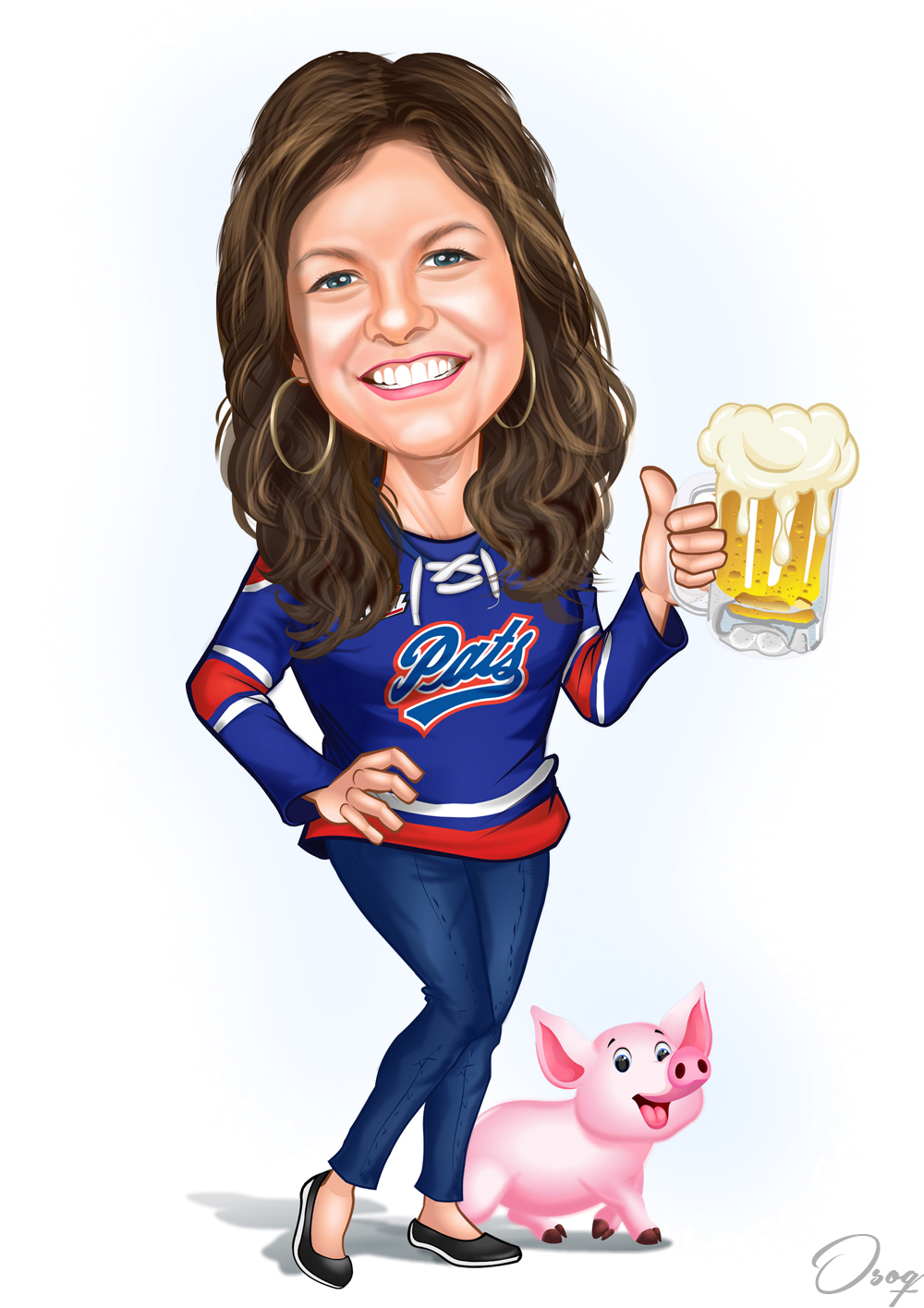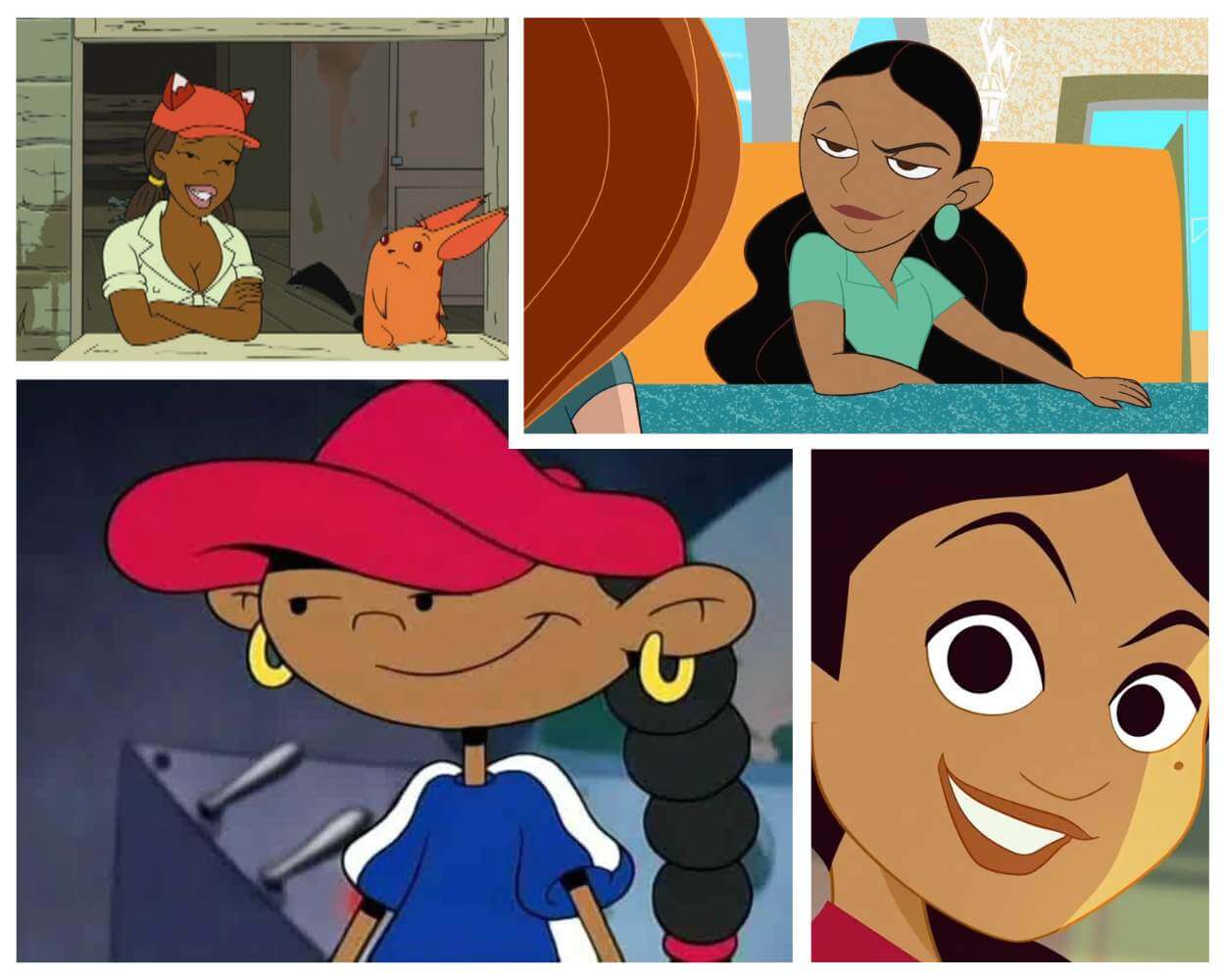Female cartoon characters have long been a source of inspiration and entertainment for audiences around the globe. From the early days of animation to the modern era of digital storytelling, these characters have played pivotal roles in shaping the way we perceive women in media. They’ve gone from being mere sidekicks to becoming fully realized protagonists with complex personalities and backstories. In this article, we’ll dive deep into the world of female cartoon characters, exploring their evolution, impact, and the stories behind their creation.
Let’s face it, folks, female cartoon characters haven’t always had it easy. For years, they were often overshadowed by their male counterparts or reduced to stereotypical roles. But as the industry evolved, so did the portrayal of women in animation. Today, we’re seeing a new wave of female characters who are strong, smart, and unstoppable. And it’s about time!
This article isn’t just about listing your favorite cartoon ladies; it’s about understanding how they’ve changed the game. We’ll explore everything from classic characters who paved the way to modern heroines who are breaking boundaries. So grab a snack, sit back, and let’s embark on this colorful journey together. Trust me, it’s gonna be a wild ride.
Read also:Carter Hudson Birthday A Deep Dive Into The Life And Celebration Of A Rising Star
Table of Contents
- The History of Female Cartoon Characters
- Biography of Iconic Female Cartoon Characters
- Character Traits That Define Female Cartoon Characters
- The Influence of Female Cartoon Characters on Pop Culture
- The Art of Animation: Bringing Female Characters to Life
- Impact on Young Audiences
- Modern Female Cartoon Characters: Breaking Stereotypes
- Challenges Faced by Female Cartoon Characters
- The Future of Female Cartoon Characters
- Wrapping It Up: Why Female Cartoon Characters Matter
The History of Female Cartoon Characters
Back in the day, animation was a boys’ club. Female characters were few and far between, and when they did appear, they were often one-dimensional. But things started to change in the mid-20th century. The 1940s and 1950s saw the rise of some iconic female cartoon characters, like Minnie Mouse and Betty Boop. These ladies weren’t just cute; they had personality and charm.
By the 1960s and 1970s, female cartoon characters began to take on more significant roles. Think about Wonder Woman, who made her debut in the DC universe and quickly became a symbol of female empowerment. And let’s not forget The Jetsons’ Jane Jetson, who was a working mom way ahead of her time. These characters showed that women could be heroes, career women, and family figures all at once.
Fast forward to today, and we’re seeing an explosion of diversity in female cartoon characters. Shows like “Adventure Time,” “Steven Universe,” and “She-Ra and the Princesses of Power” are redefining what it means to be a female character in animation. It’s not just about being strong; it’s about being real, relatable, and multidimensional.
Early Days of Female Animation
In the early days of animation, female characters were often depicted as damsels in distress or love interests. But as the industry grew, so did the complexity of these characters. Animators began to realize that audiences wanted more than just eye candy; they wanted substance. This shift led to the creation of characters like Snow White, who, despite being a princess, had a story that resonated with audiences.
Biography of Iconic Female Cartoon Characters
Some female cartoon characters have become so iconic that they’ve transcended the medium of animation. Here’s a quick look at a few of them:
| Name | Creator | First Appearance | Notable Traits |
|---|---|---|---|
| Minnie Mouse | Walt Disney and Ub Iwerks | 1928 | Playful, stylish, and loyal |
| Betty Boop | Max Fleischer | 1930 | Flirty, fun-loving, and sassy |
| Wonder Woman | William Moulton Marston | 1941 | Brave, intelligent, and compassionate |
Character Spotlight: Wonder Woman
Wonder Woman, or Diana Prince, is more than just a superhero; she’s a cultural icon. Created by William Moulton Marston in 1941, Wonder Woman was one of the first female superheroes to appear in comic books. Her story is one of strength, justice, and empowerment, making her a role model for generations of women.
Read also:Top Female Famous Cartoon Characters That Have Left A Mark On Pop Culture
Character Traits That Define Female Cartoon Characters
What makes a great female cartoon character? It’s not just about looks; it’s about personality. Here are some traits that define the best female cartoon characters:
- Strength: Whether physical or emotional, strength is a common trait among female cartoon characters. Think of Mulan, who fights for her family and country, or Katniss Everdeen, who takes on the Capitol.
- Intelligence: Smart characters like Hermione Granger and Lisa Simpson show that brains can be just as important as brawn.
- Empathy: Characters like Belle from “Beauty and the Beast” and Korra from “The Legend of Korra” demonstrate the power of compassion and understanding.
These traits help make female cartoon characters relatable and inspiring. They show that women can be strong, smart, and kind all at the same time.
The Influence of Female Cartoon Characters on Pop Culture
Female cartoon characters have had a massive impact on pop culture. They’ve influenced fashion, music, and even social movements. For example, the punk rock movement of the 1970s was heavily inspired by the edgy style of characters like Betty Boop and Josie and the Pussycats. And let’s not forget the impact of shows like “X-Men” and “Avatar: The Last Airbender,” which have inspired countless fans to embrace their inner hero.
But it’s not just about fashion and music; female cartoon characters have also played a role in shaping societal norms. Shows like “The Simpsons” and “Family Guy” have tackled tough topics like gender equality and LGBTQ+ rights through their female characters. These characters have given a voice to marginalized groups and helped spark important conversations.
Breaking Gender Norms
One of the most significant contributions of female cartoon characters has been their role in breaking gender norms. Characters like Blossom from “The Powerpuff Girls” and Buttercup from “Adventure Time” have shown that girls can be just as tough and adventurous as boys. This has helped pave the way for a new generation of female characters who aren’t afraid to challenge the status quo.
The Art of Animation: Bringing Female Characters to Life
Animation is an art form that requires a lot of skill and creativity. Bringing female cartoon characters to life involves more than just drawing pretty pictures; it’s about creating characters that feel real and relatable. Animators use a variety of techniques to bring out the personality of each character, from their expressions to their movements.
For example, the animators behind “She-Ra and the Princesses of Power” used a unique art style that combined traditional animation with modern digital techniques. This helped create a world that felt both familiar and fresh. Similarly, the animators of “Steven Universe” used vibrant colors and dynamic camera angles to bring the show’s female characters to life.
Technological Advancements in Animation
Over the years, technological advancements have revolutionized the world of animation. From traditional hand-drawn animation to modern CGI, animators now have more tools than ever to create stunning visuals. This has allowed for the creation of more complex and detailed female characters, who can express a wider range of emotions.
Impact on Young Audiences
Female cartoon characters have a profound impact on young audiences. They serve as role models, teaching kids important lessons about courage, kindness, and perseverance. Shows like “Dora the Explorer” and “Doc McStuffins” have helped inspire a new generation of young girls to pursue their dreams and embrace their unique qualities.
But it’s not just about inspiring kids; female cartoon characters also help foster empathy and understanding. By showing diverse perspectives and experiences, these characters help kids learn about the world around them and the people in it. This is especially important in today’s globalized society, where understanding and acceptance are more important than ever.
Empowering Young Girls
One of the most important roles of female cartoon characters is empowering young girls. Characters like Elsa from “Frozen” and Moana from “Moana” have shown that girls can be strong leaders who make their own choices. This has helped inspire a new generation of girls to believe in themselves and pursue their passions.
Modern Female Cartoon Characters: Breaking Stereotypes
Modern female cartoon characters are breaking stereotypes left and right. Shows like “BoJack Horseman” and “Big Mouth” are tackling tough topics like mental health and body positivity through their female characters. These shows are proving that animation isn’t just for kids; it’s a powerful medium that can address real-world issues.
And it’s not just about addressing serious topics; modern female cartoon characters are also having fun. Shows like “Adventure Time” and “Gravity Falls” have created memorable characters who are quirky, funny, and full of life. These characters show that women can be anything they want to be, whether it’s a brave adventurer or a sarcastic best friend.
Representation Matters
Representation is crucial in media, and female cartoon characters are leading the charge. Shows like “Steven Universe” and “She-Ra and the Princesses of Power” have featured diverse casts of characters who represent a wide range of backgrounds and experiences. This has helped create a more inclusive and welcoming world of animation.
Challenges Faced by Female Cartoon Characters
Despite their many achievements, female cartoon characters still face challenges in the industry. Issues like representation, stereotyping, and lack of diversity continue to plague the world of animation. However, progress is being made, and more and more shows are featuring strong, complex female characters.
One of the biggest challenges facing female cartoon characters is the pressure to conform to traditional beauty standards. While this is slowly changing, there’s still a long way to go. Shows like “The Marvelous Mrs. Maisel” and “Little Women” are helping to break down these barriers by featuring characters who don’t fit the traditional mold.
Breaking Down Barriers
Breaking down barriers is essential for the future of female cartoon characters. By embracing diversity and challenging stereotypes, animators can create a world where all women are represented and celebrated. This will help inspire future generations of female animators and creators to continue pushing the boundaries of what’s possible.
The Future of Female Cartoon Characters
The future of female cartoon characters looks bright. With more and more shows featuring strong, diverse female characters, the industry is heading in the right direction. But there’s still work to be done. Animators need to continue pushing the boundaries of what’s possible and creating characters that resonate with audiences of all ages and backgrounds.
As technology continues to evolve, so too will the world of animation. This will allow for the creation of even more complex and dynamic female characters who can inspire and entertain audiences around the globe. The future is female, and the world of animation is ready for it.
A World of Possibilities
The possibilities for female cartoon characters are endless. From superheroes to everyday heroes, these characters have the power to change the world. By continuing to create strong, diverse, and relatable female characters, animators can help shape the future of media and inspire generations to come.
Wrapping It Up: Why Female Cartoon Characters Matter
In conclusion, female cartoon characters matter because they represent so much more than just entertainment. They’re role models, teachers, and inspirations. They show us that women can be anything they want to be, whether it’s a brave adventurer, a brilliant scientist, or a compassionate friend.
So the next time you watch your favorite cartoon, take a moment to appreciate the female characters who’ve made such a big


